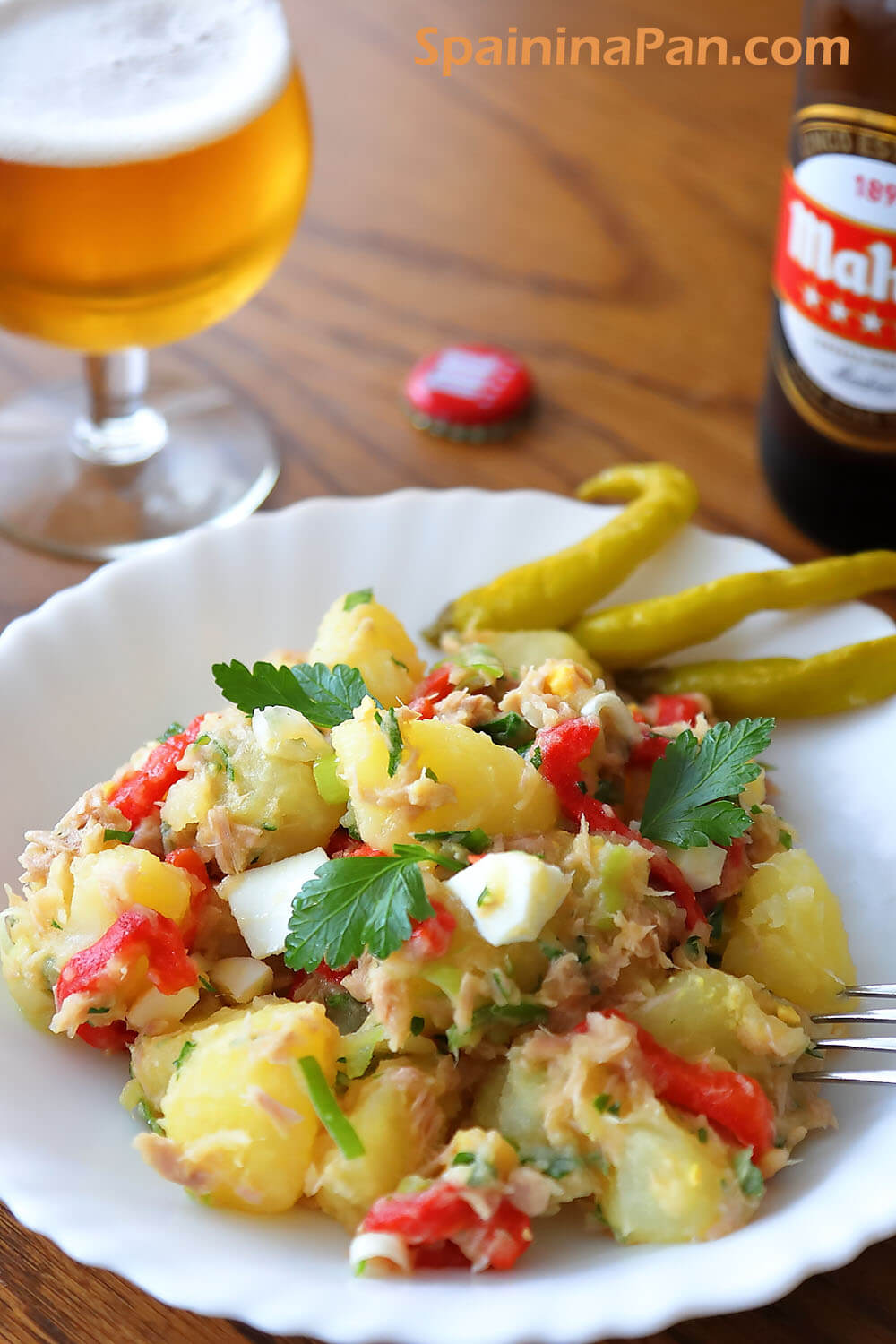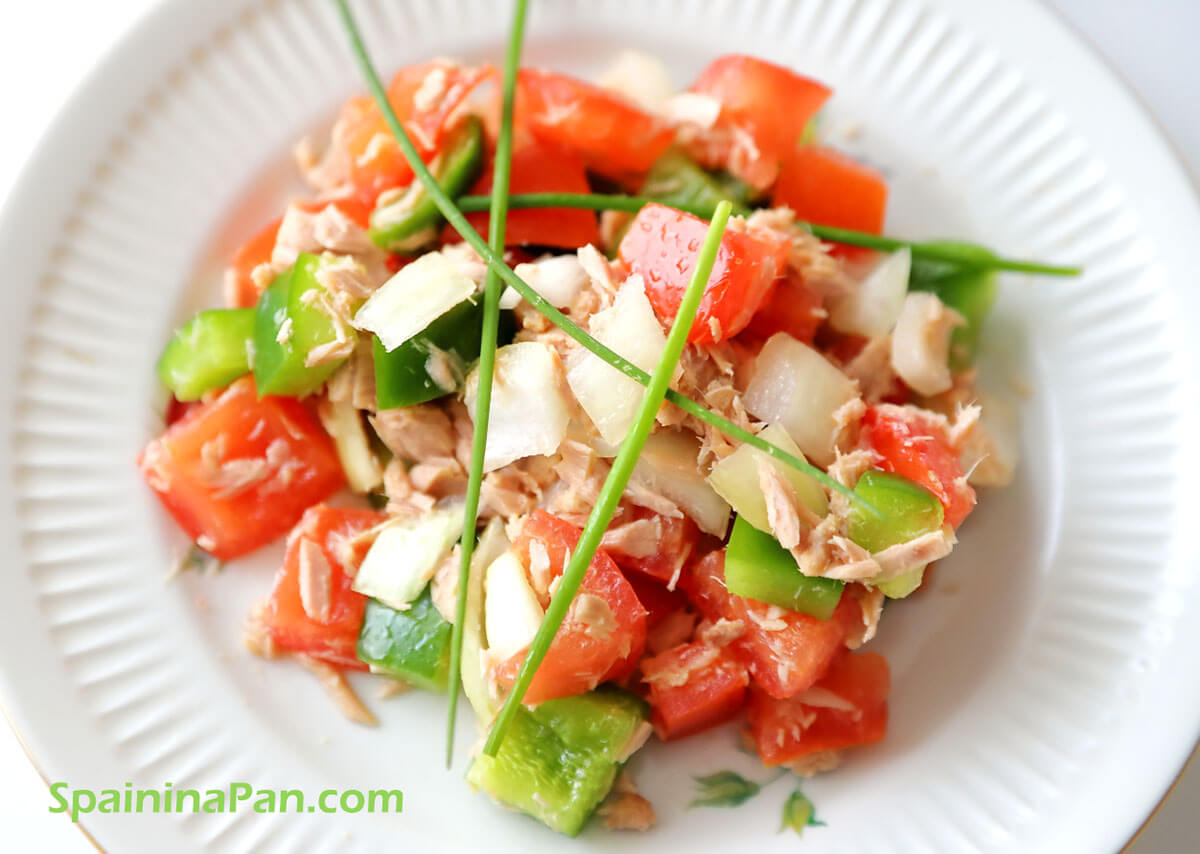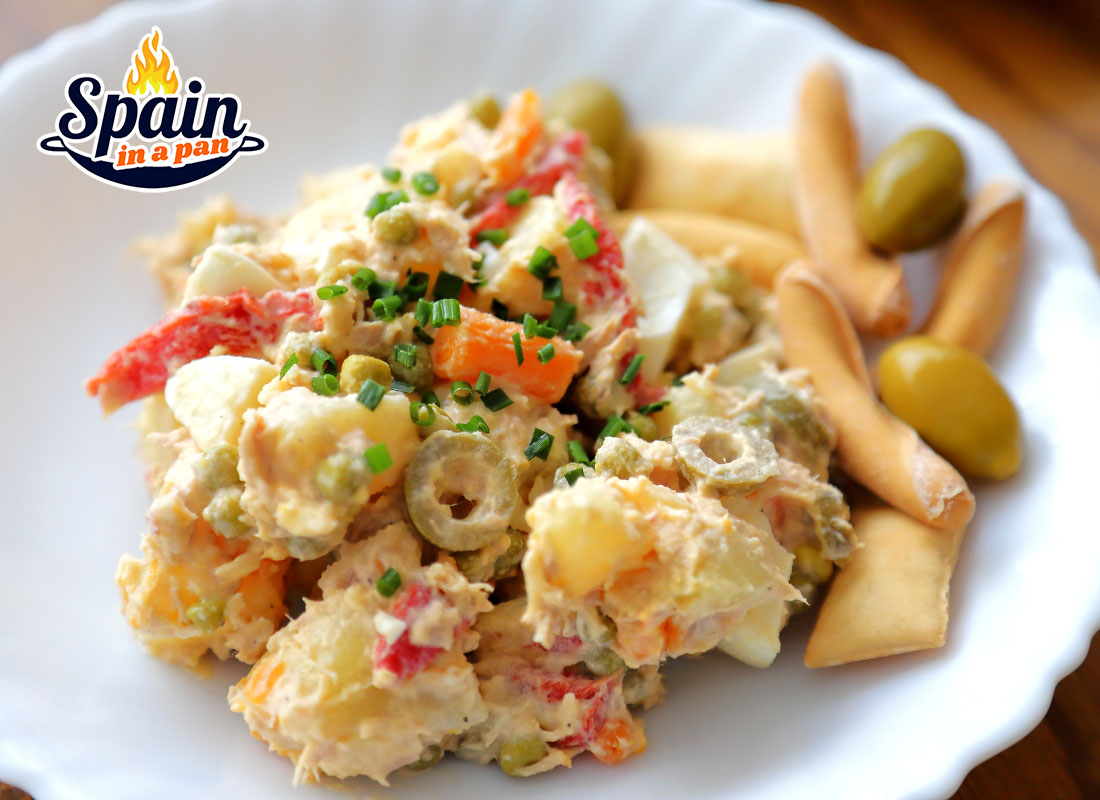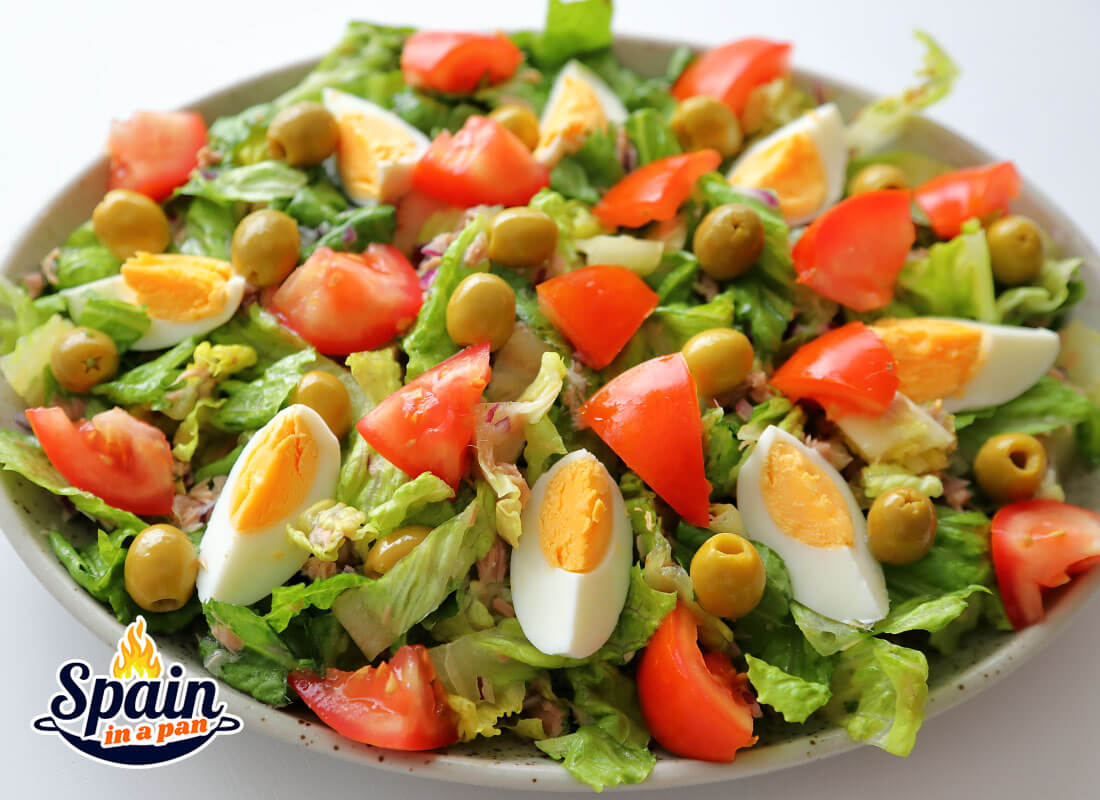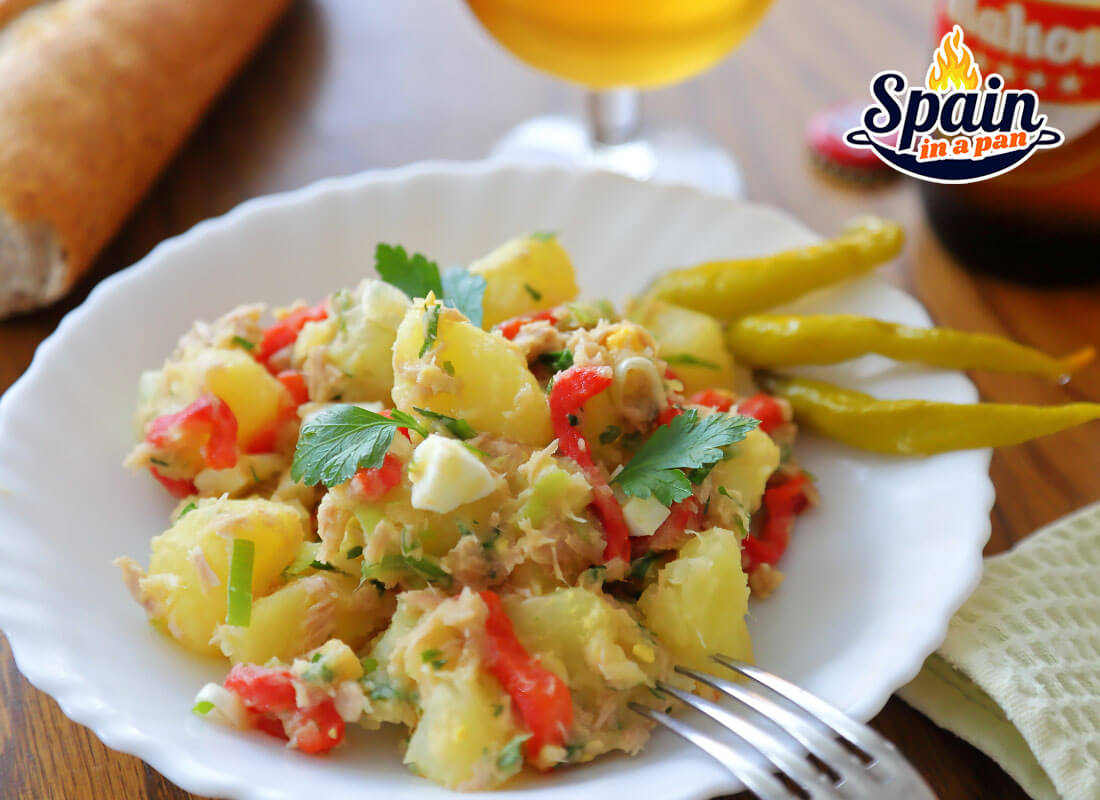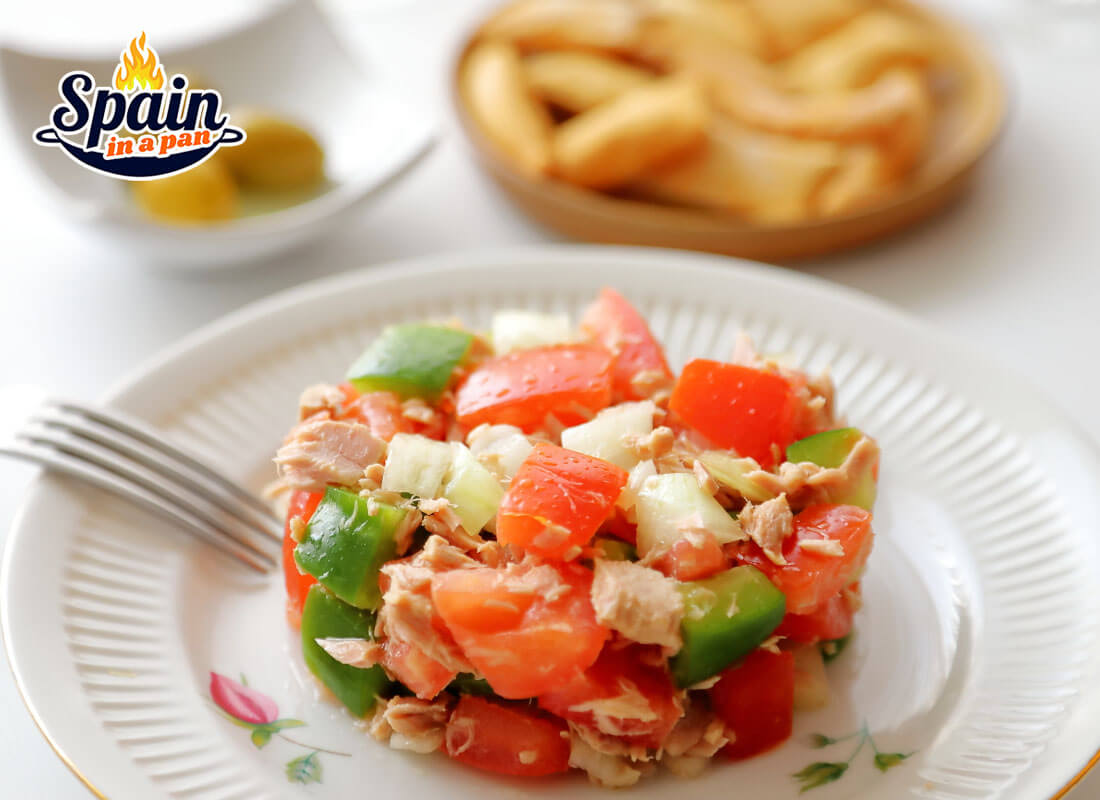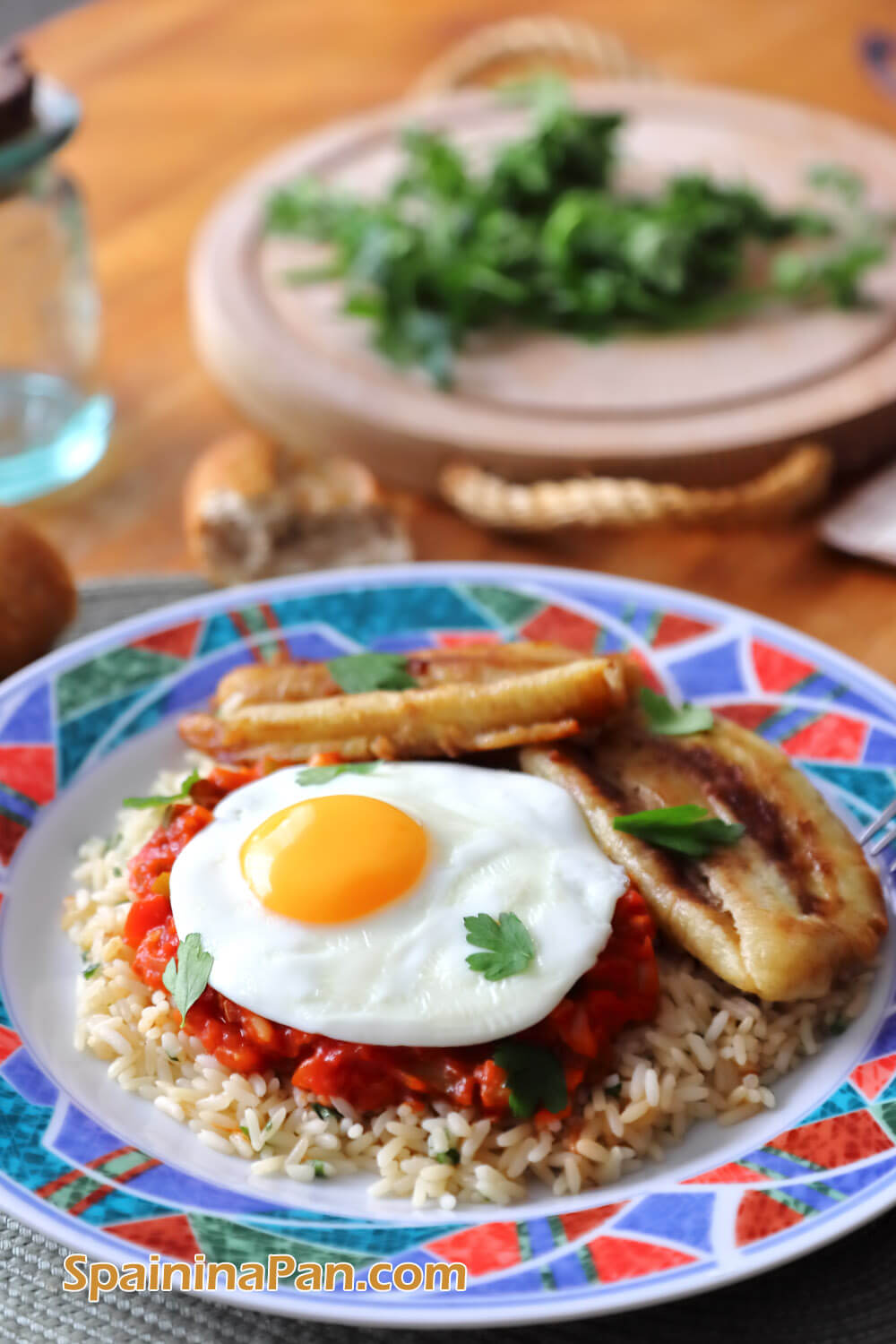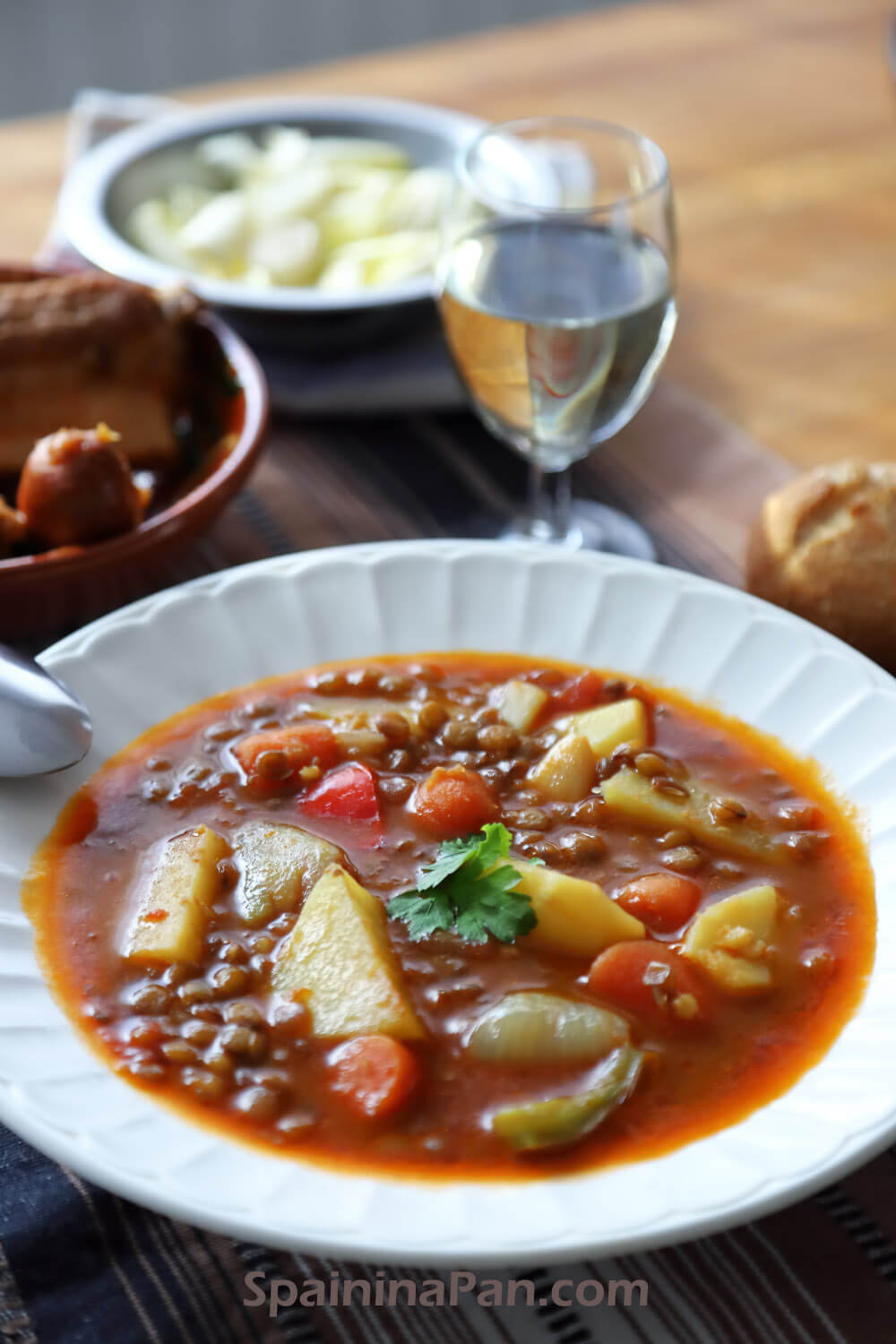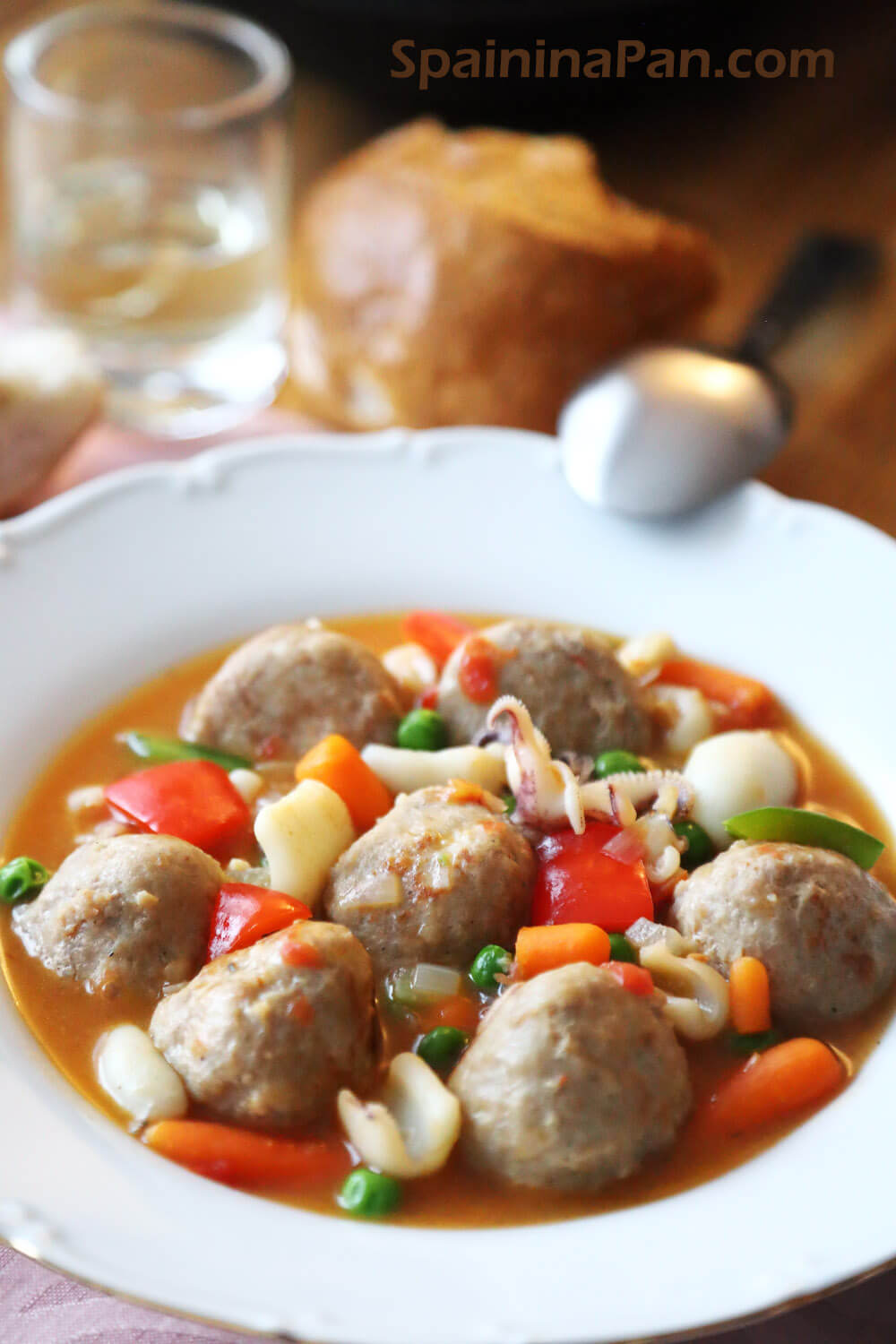- HOME
- Salads
Authentic Spanish Salad Recipes : Fresh Flavors from Spain!
(Ensaladas Españolas)
By Edu Valor / Author - Spanish Chef
On a hot day, you crave something light and refreshing for lunch. Spanish salad recipes are perfect for this! Growing up, I often enjoyed salads with my meals, especially during the spring and summer seasons.
Tomato, onion, and lettuce were the staple ingredients.
Even without adding anything else, tomato, onion, and lettuce make an excellent side dish that pairs well with almost any meal.
Plus, you get the added benefits of extra nutrients and fiber!
Salad making is an ancient tradition, and with Hispania (Iberia) being part of the Roman Empire, we inherited various methods of preparing them. The word "salad" comes from the Latin "sal," meaning salt, as the vegetables were traditionally seasoned with salt.
This is also where the word "ensalada" comes from, which literally means "salted." You'll often find some type of oil, vinegar, or lemon juice in the mix as well.
Basic ingredients are often combined with others. In our family, these included:
- Olives
- Boiled potatoes
- Cucumbers
- Bell peppers (roasted or not)
- Tuna
- Boiled eggs
These ingredients can be used in any combination. We usually enjoyed them as a side dish with the main meal. They pair wonderfully with fish, shellfish, chicken, and other meats.
Basic recipes, those without cooked ingredients, also combine well with certain stews. I often have them with bean or potato stews.
Or how about fries with roasted chicken? Many Spanish salads pair well with almost any dish, especially those made entirely of raw vegetables.
Whatever the combination, almost all of them are referred to as "ensalada mixta."
Of course, there's more to explore. Some of these salads can be a filling meal on their own.
The addition of certain meats, fish, shellfish, potatoes, pasta, etc., may sound modern, but they are actually traditional Spanish.
Do You Want Ensalada or Ensaladilla?
These terms are often considered synonymous, but they are not. While they may seem similar, there are some key differences.
An "ensalada" consists of all raw vegetables, cut and seasoned with salt. It is usually dressed with vinegar, oil, lemon juice, or some type of vinaigrette.
An "ensaladilla," on the other hand, has all or some of its ingredients cooked. It doesn't have to be all vegetables and may include ingredients such as chicken, shrimp, pasta, anchovies, or other fish.
You can use dressing with ensaladilla just like with an ensalada. Personally, I prefer them with a sauce such as mayonnaise, either on its own or mixed with mustard and lemon juice.
Ensaladilla Rusa is probably the most popular salad with mayonnaise. I like it best when it's very cold!
There are many ways to prepare ensaladas and ensaladillas to accompany traditional dishes, with as many variations as there are villages in Spain. Each often has a recognizable name from the region.
Both types of salad are very typical of the Mediterranean.
It's worth noting that fresh ingredients (cooked or not) are always better than canned or jarred ones. It's common sense, considering that the taste and texture deteriorate over time.
Spanish Salad Recipes as a Full Meal?
Spain boasts many vegetarian dishes that will delight many of you.
During times of shortage, such as during and after the civil war, people relied on cheap but energy-dense ingredients like bread, potatoes, and rice.
Meat was not always available, and fish was sometimes used as a substitute. However, people were creative enough to develop filling recipes using readily available ingredients. Farmers knew that potatoes provided enough energy to work the land.
They created dishes using ingredients such as legumes, potatoes (including boniato), mushrooms, lupins, chestnuts, and a few others.
Everything that could serve as an energy source was used. They even made tortillas with orange peel, ensuring nothing went to waste.
Some of the ingredients were conveniently used to quickly make salads, often from leftovers.
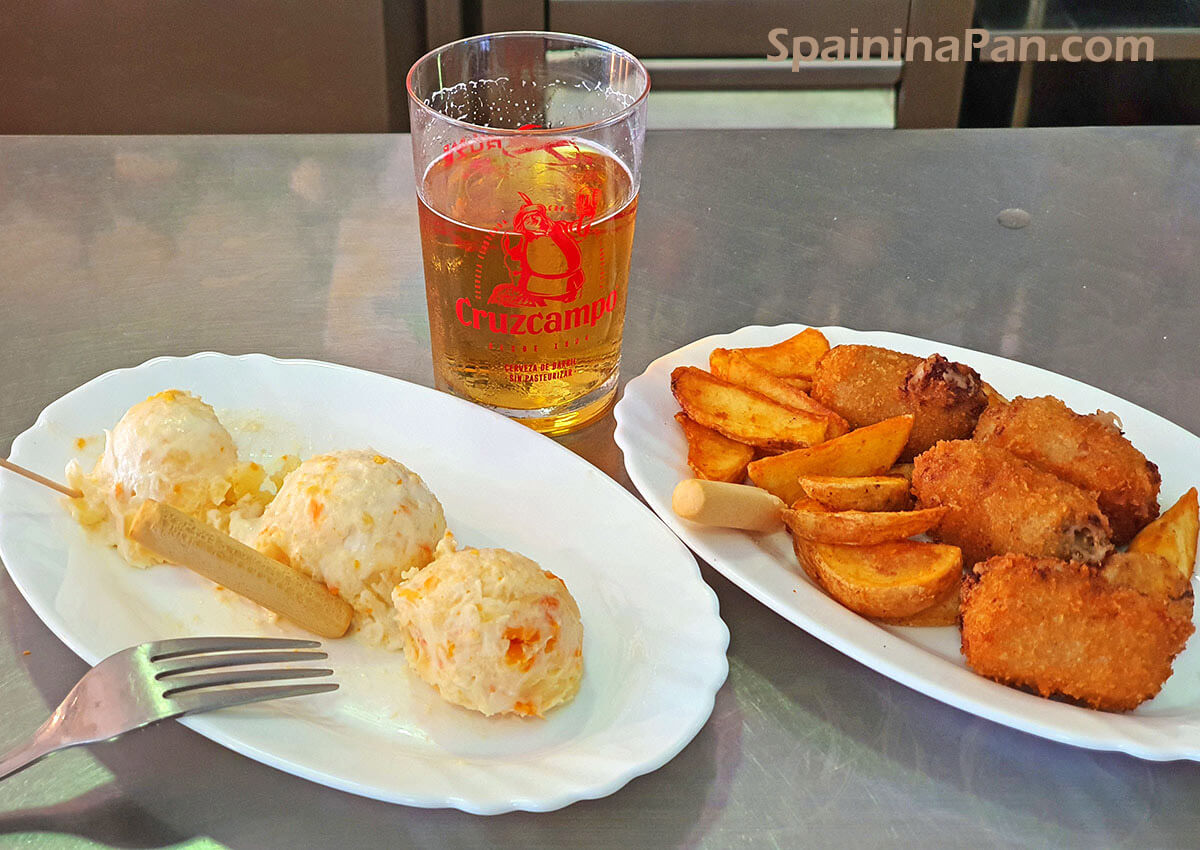 Tapas of ensaladilla with puchero croquettes and the obvious cold beer.
Tapas of ensaladilla with puchero croquettes and the obvious cold beer.
Energy-dense stews without meat and fish became popular as home workers realized they could be a complete meal. This is good news for vegans and vegetarians, as many of those dishes are still made today, although often with the addition of meats.
While we are not sure if the campera salad (ensalada campera) is directly tied to that war history, it is associated with the countryside, its farmers, and the summer months.
Certain authentic Spanish salad recipes served multiple purposes.
In times of hunger, potatoes saved the day. With their 80 to 85% water content, they were the perfect solution for a hot summer day in the field. Many people survived thanks to potatoes, as they significantly reduced famine.
It was during these times that key staples gave birth to dishes we still enjoy today.
*****
